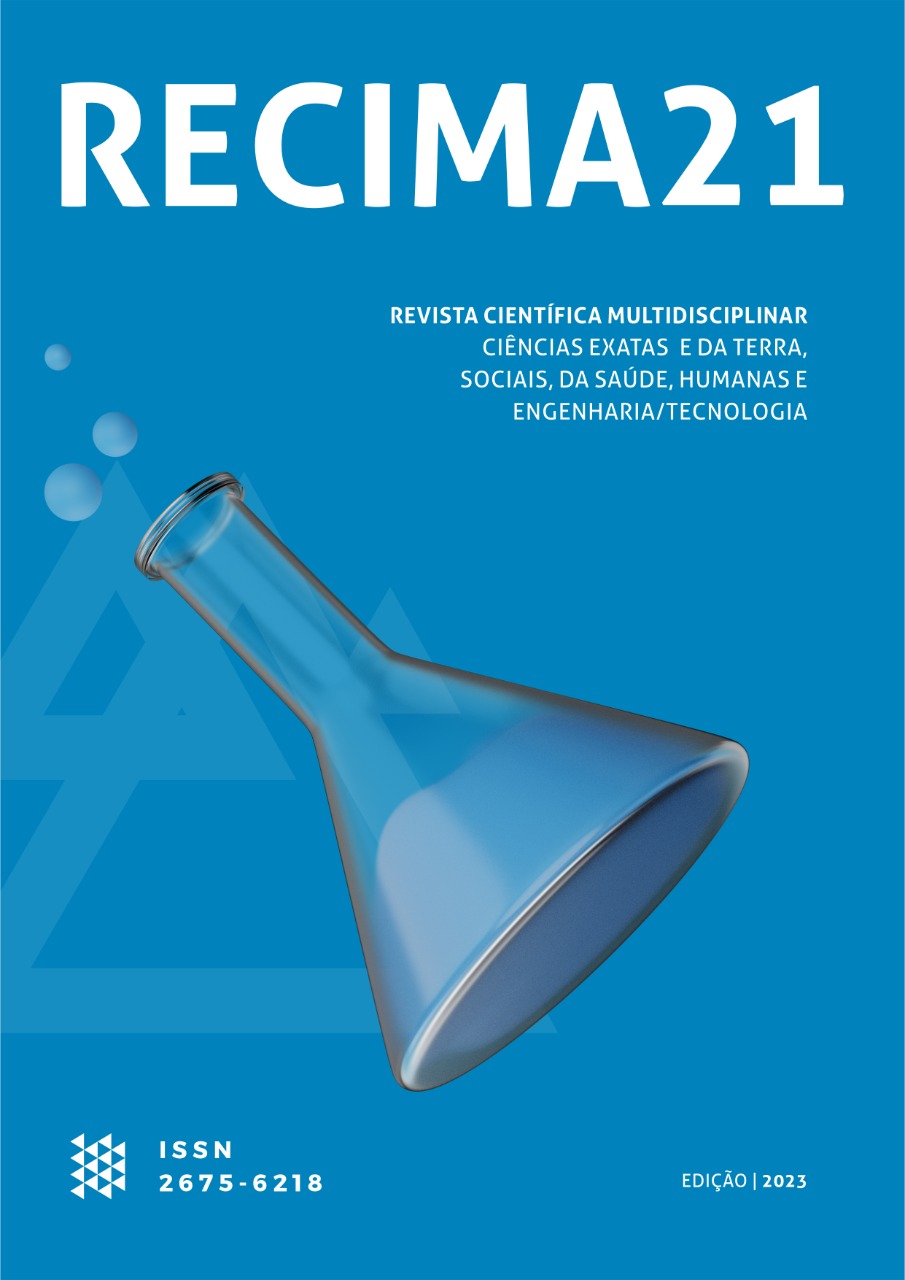ESTÁNDARES DE SEGURIDAD PARA DISPOSITIVOS IOT DE GAMA BAJA: UNA REVISIÓN COMPARATIVA
DOI:
https://doi.org/10.47820/recima21.v4i1.2437Palabras clave:
Internet das coisas, SegurançaResumen
El Internet de las cosas permite que las personas y los objetos se conecten en cualquier momento, en cualquier lugar, con cualquier objeto a cualquier persona, utilizando cualquier ruta / red y cualquier servicio. Por lo tanto, conduce a una heterogeneidad desafiante de componentes y redes. Se desarrollaron diferentes sistemas operativos para dispositivos IoT de gama baja con requisitos estrictos impuestos principalmente por la baja capacidad de procesar y almacenar información en comparación con una máquina convencional. Por lo tanto, el sistema operativo debe ser capaz de realizar tareas de la manera más eficiente posible. En redes heterogéneas, como en el caso de IoT, es más complejo garantizar la seguridad y privacidad de los sistemas que forman parte de este ecosistema. La funcionalidad principal de IoT se basa en el intercambio de información entre cientos o incluso millones de objetos con Internet. Este trabajo realiza una revisión comparativa de las principales características de seguridad disponibles en sistemas operativos orientados a IoT de gama baja, incluidos Contiki, RIOT-OS, TinyOS y FreeRTOS.
Descargas
Citas
A. Ouadjaout, A. Miné, N. Lasla, and N. Badache, “Static analysis by abstract interpretation of functional properties of device drivers in TinyOS,” J. Syst. Softw., vol. 120, pp. 114–132, 2016.
A. Al-Fuqaha, M. Guizani, M. Mohammadi, M. Aledhari and M. Ayyash, "Internet of Things: A Survey on Enabling Technologies, Protocols, and Applications," in IEEE Communications Surveys & Tutorials, vol. 17, no. 4, pp. 2347-2376, Fourth quarter 2015. doi: 10.1109/COMST.2015.2444095
A. Hicham, A. Sabri, A. Jeghal, and H. Tairi, “A Comparative Study between Operating Systems for the Internet of Things (IoT),” Trans. Mach. Learn. Artif. Intell., Vol. 5, No. 4, 2017.
Aberbach, Hicham & Abdelouahed, Sabri & Jeghal, Adil & Tairi, H. (2017). A Comparative Study between Operating Systems (Os) for the Internet of Things (IoT). Transactions on Machine Learning and Artificial Intelligence. 5. 10.14738/tmlai.54.3192.
Luigi Atzori, Antonio Iera, Giacomo Morabito, The Internet of Things: A survey, Computer Networks, Volume 54, Issue 15, 2010, Pages 2787-2805, ISSN 1389-1286, https://doi.org/10.1016/j.comnet.2010.05.010.
Brian Russell and Drew Van Duren. 2018. Practical Internet of Things Security: Design a Security Framework for an Internet Connected Ecosystem, 2nd Edition (2nd ed.). Packt Publishing.
C. Lévy-Bencheton, E. Darra, G. Tétu, G. Dufay, and M. Alattar, “Security and resilience of smart home environments: Good practices and recommendations,” Eur. Union Agency Netw. Inf. Security, Athens, Greece, Rep., Dec. 2015. Accessed: Jun. 2019. [Online]. Available: https://www.enisa.europa.eu/publications/security-resilience-good-practices. doi: 10.2824/360120.
C. Sabri, L. Kriaa, and S. L. Azzouz, “Comparison of IoT constrained devices operating systems: A survey,” Proc. IEEE/ACS Int. Conf. Comput. Syst. Appl. AICCSA, vol. 2017–Octob, pp. 369–375, 2018.
Dener, M. (2014). Security Analysis in Wireless Sensor Networks. International Journal of Distributed Sensor Networks. https://doi.org/10.1155/2014/303501
E. Baccelli et al., "RIOT: An Open Source Operating System for Low-End Embedded Devices in the IoT," in IEEE Internet of Things Journal, vol. 5, no. 6, pp. 4428-4440, Dec. 2018. doi: 10.1109/JIOT.2018.2815038
Heer, T.; Garcia-Morchon, O.; Hummen, R.; Keoh, S.L.; Kumar, S.S.; Wehrle, K. Security Challenges in the IP-based Internet of Things. Wirel. Person. Commun. 2011, 61, 527–542.
Hoepman J.-H., Jacobs B. Increased security through open source Commun. ACM, 50 (1) (2007), pp. 79-83, doi: http://doi.acm.org/10.1145/1188913.1188921
I. Ishaq et al., “IETF standardization in the field of the Internet of Things (IoT): A survey,” J. Sens. Actuator Netw., vol. 2, pp. 235–287, 2013.
Jsang, A. and Maseng, T. and Knapskog, S.J. Identity and Privacy in the Internet Age: 14th Nordic Conference on Secure IT Systems, NordSec 2009, Oslo, Norway, 14-16 October 2009, Proceedings LNCS sublibrary: Security and cryptology Volume 5838 de Lecture Notes in Computer Science Security and Cryptology.
Hahm, Oliver et al. “Operating Systems for Low-End Devices in the Internet of Things: A Survey.” IEEE Internet of Things Journal 3 (2016): 720-734. DOI:10.1109/JIOT.2015.2505901
O. Vermesan, P. Friess, P. Guillemin, S. Gusmeroli, H. Sundmaeker, A. Bassi, I.S. Jubert, M. Mazura, M. Harrison, M. Eisenhauer, P. Doody, Internet of Things Strategic Research Roadmap, Cluster of European Research Projects on the Internet of Things, CERP-IoT, 2011.
Oliver Hahm, Emmanuel Baccelli, Hauke Petersen, Nicolas Tsiftes. Operating Systems for Low-End Devices in the Internet of Things: A Survey. IEEE Internet of Things Journal, IEEE, 2016, 3 (5), pp.720-734. ff10.1109/JIOT.2015.2505901ff. ffhal-01245551f
Perera, Charith & Liu, Chi Harold & Jayawardena, Srimal & Chen, Min. (2015). A Survey on Internet of Things From Industrial Market Perspective. IEEE ACCESS. 2. 1660-1679. Doi: 10.1109/ACCESS.2015.2389854.
Sha, Kewei, Wei Wei, T. Andrew Yang, Zhiwei Wang, and Weisong Shi. 2018. On security challenges and open issues in Internet of Things. Future Generation Computer Systems-The International Journal of eScience 83: 326–37.
Singh, S., Sharma, P.K., Moon, S.Y. et al. J Ambient Intell Human Comput (2017). https://doi-org.ez139.periodicos.capes.gov.br/10.1007/s12652-017-0494-4
Tan, S. L. and Tran Nguyen, B. A. (2009) ‘Survey and performance evaluation of real-time operating systems (RTOS) for small microcontrollers’, IEEE Micro, pp. 1–14. doi: 10.1109/mm.2009.56. TinyOS Documentation Wiki. http://tinyos.stanford.edu/tinyos-wiki/index.php/TinySec. Accessed: 21/10/2021
Umer, T, Rehmani, MH, Kamal, AE, Mihaylova, L. Information and resource management systems for Internet of Things: energy management, communication protocols and future applications. Future Gener Comput Syst; 2019; 92: 1021‐ 1027.
WolfSSL, State of the art networking security for embedded systems. https://www.freertos.org/FreeRTOS-Plus/WolfSSL/WolfSSL.html. Accessed: 07/07/2021.
Zikria, Yousaf & Kim, Sung & Hahm, Oliver & Afzal, Muhammad & Y Aalsalem, Mohammed. (2019). Internet of Things (IoT) Operating Systems Management: Opportunities, Challenges, and Solution. Sensors. 8. 1-10. Doi: 10.3390/s1908
Descargas
Publicado
Cómo citar
Número
Sección
Categorías
Licencia
Derechos de autor 2023 RECIMA21 - Revista Científica Multidisciplinar - ISSN 2675-6218

Esta obra está bajo una licencia internacional Creative Commons Atribución 4.0.
Os direitos autorais dos artigos/resenhas/TCCs publicados pertecem à revista RECIMA21, e seguem o padrão Creative Commons (CC BY 4.0), permitindo a cópia ou reprodução, desde que cite a fonte e respeite os direitos dos autores e contenham menção aos mesmos nos créditos. Toda e qualquer obra publicada na revista, seu conteúdo é de responsabilidade dos autores, cabendo a RECIMA21 apenas ser o veículo de divulgação, seguindo os padrões nacionais e internacionais de publicação.

 Clique para ver detalhes
Clique para ver detalhes 











